Predecessor William I | Children William Clito Name Robert Curthose | |
Tenure 9 September 1087 – 1106 Siblings Henry I of England, William II of England Parents Matilda of Flanders, William the Conqueror Similar People William the Conqueror, William II of England, Henry I of England, Robert I - Duke of Normandy, Matilda of Flanders | ||
Robert curthose
Robert Curthose (c. 1051 – 3 February 1134), sometimes called Robert II or Robert III, was the Duke of Normandy from 1087 until 1106 and an unsuccessful claimant to the throne of the Kingdom of England. A participant in the First Crusade, Robert's reign as duke is noted for the discord with his brothers in England, eventually leading to his death in captivity and the absorption of Normandy as a possession of England.
Contents
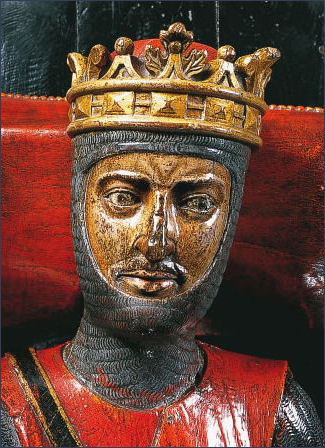
Biography

Robert was the eldest son of William the Conqueror, the first Norman king of England, and Matilda of Flanders.

Robert's birth-date ranges between 1051 and 1053. As a child he was betrothed to Margaret, the heiress of Maine, but she died before they could be wed, and Robert didn't marry until his late forties. In his youth he was reported to be courageous and skilful in military exercises. He was, however, also prone to laziness and weakness of character that discontented nobles and the King of France exploited to stir discord with his father William. He was unsatisfied with the share of power allotted to him and quarrelled with his father and brothers fiercely. In 1063, his father made him the Count of Maine in view of his engagement to Margaret, and Robert may have had independent rule in Maine. The county remained under Norman control until 1069 when the county revolted and reverted to Hugh V of Maine.
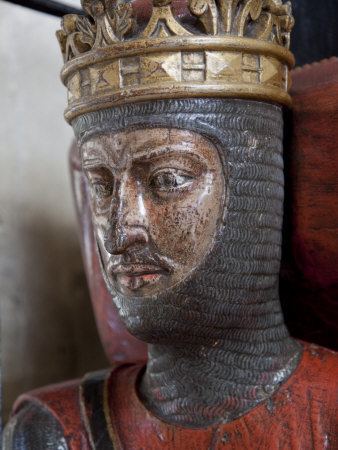
In 1077, Robert instigated his first insurrection against his father as the result of a prank played by his younger brothers William Rufus and Henry, who had dumped a full chamber-pot over his head. Robert was enraged and, urged on by his companions, started a brawl with his brothers that was only interrupted by the intercession of their father. Feeling that his dignity was wounded, Robert was further angered when King William failed to punish his brothers. The next day Robert and his followers attempted to seize the castle of Rouen. The siege failed, but, when King William ordered their arrest, Robert and his companions took refuge with Hugh of Chateauneuf-en-Thymerais. They were forced to flee again when King William attacked their base at Rémalard.
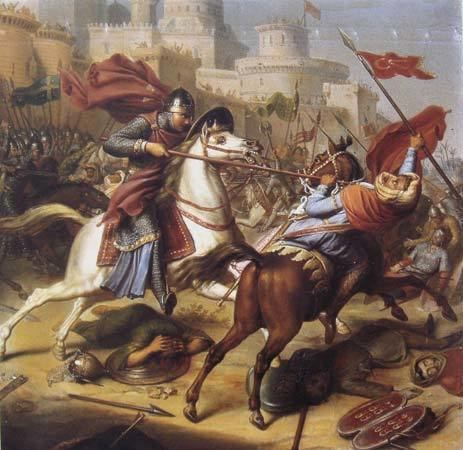
Robert fled to Flanders to the court of his uncle Robert I, Count of Flanders, before plundering the county of the Vexin and causing such mayhem that his father King William allied himself with King Philip I of France to stop his rebellious son. Relations were not helped when King William discovered that his wife, Robert's mother Queen Matilda, was secretly sending her son Robert money. At a battle in January 1079, Robert unhorsed King William in combat and succeeded in wounding him, stopping his attack only when he recognised his father's voice. Humiliated, King William cursed his son. King William then raised the siege and returned to Rouen.
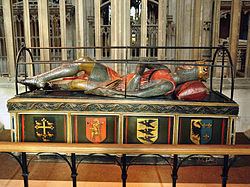
At Easter 1080, father and son were reunited by the efforts of Queen Matilda, and a truce lasted until she died in 1083. Robert seems to have left court soon after the death of his mother, Queen Matilda, and spent several years travelling throughout France, Germany and Flanders. He visited Italy seeking the hand of the great heiress Matilda of Tuscany (b. 1046) but was unsuccessful. During this period as a wandering knight Robert sired several illegitimate children. His illegitimate son, Richard, seems to have spent much of his life at the royal court of his uncle William Rufus. This Richard was killed in a hunting accident in the New Forest in 1099 as was his uncle, King William Rufus, the next year. An illegitimate daughter was later married to Helias of Saint-Saens.
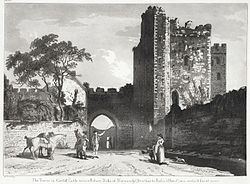
In 1087, the elder William died of wounds suffered from a riding accident during a siege of Mantes. At his death he reportedly wanted to disinherit his eldest son but was persuaded to divide the Norman dominions between his two eldest sons. To Robert he granted the Duchy of Normandy and to William Rufus he granted the Kingdom of England. The youngest son Henry was given money to buy land. Of the two elder sons Robert was considered to be much the weaker and was generally preferred by the nobles who held lands on both sides of the English Channel since they could more easily circumvent his authority. At the time of their father's death the two brothers made an agreement to be each other's heir. However this peace lasted less than a year when barons joined with Robert to displace Rufus in the Rebellion of 1088. It was not a success, in part because Robert never showed up to support the English rebels.
Robert took as his close adviser Ranulf Flambard, who had been previously a close adviser to his father. Flambard later became an astute but much-disliked financial adviser to William Rufus until the latter's death in 1100.
In 1096, Robert formed an army and left for the Holy Land on the First Crusade. At the time of his departure he was reportedly so poor that he often had to stay in bed for lack of clothes. To raise money for the crusade he mortgaged his duchy to his brother William for the sum of 10,000 marks.
When William II died on 2 August 1100, Robert was on his return journey from the Crusade and was about to marry a wealthy young bride to raise funds to buy back his duchy. As a result, his brother Henry was able to seize the crown of England for himself. Upon his return, Robert – urged by Flambard and several Anglo-Norman barons – claimed the English crown on the basis of the short-lived agreement of 1087. In 1101, he led an invasion to oust his brother Henry; he landed at Portsmouth with his army, but his lack of popular support among the English (Anselm, the archbishop of Canterbury, was decidedly against him and the Charter of Liberties issued at Henry's coronation was well liked) as well as Robert's own mishandling of the invasion tactics enabled Henry to resist the invasion. Robert was forced by diplomacy to renounce his claim to the English throne in the Treaty of Alton. It is said that Robert was a brilliant field commander but a terrible strategist in the First Crusade.
In 1105, however, Robert's continual stirring of discord with his brother in England as well as civil disorder in Normandy itself prompted Henry to invade Normandy. Orderic reports on an incident at Easter 1105 when Robert was supposed to hear a sermon by the venerable Serlo, Bishop of Sées. Robert spent the night before sporting with harlots and jesters, and while he lay in bed sleeping off his drunkenness his unworthy friends stole his clothes. He awoke to find himself naked and had to remain in bed and missed the sermon.
In 1106, Henry defeated Robert's army decisively at the Battle of Tinchebray and claimed Normandy as a possession of the English crown, a situation that endured for almost a century. Captured after the battle, Robert was imprisoned in Devizes Castle for twenty years before being moved to Cardiff.
In 1134, Robert died in Cardiff Castle in his early eighties. Robert Curthose, sometime Duke of Normandy, eldest son of the Conqueror, was buried in the abbey church of St. Peter in Gloucester. The exact place of his burial is difficult to establish – legend states that he requested to be buried before the High Altar. His effigy carved in bog oak, however, lies on a mortuary chest decorated with the attributed arms of the Nine Worthies (missing one – Joshua, and replaced with the arms of Edward the Confessor). The effigy dates from about 100 years after his death and the mortuary chest much later. The church subsequently has become Gloucester Cathedral.
Descendants
Robert married Sybilla of Conversano, daughter of Geoffrey of Brindisi, Count of Conversano (and a grandniece of Robert Guiscard, another Norman duke) on the way back from Crusade, one child:
- William Clito, was born 25 October 1102 and became heir to the Duchy of Normandy. William Clito was unlucky all his life; his attempts to invade Normandy failed twice (1119) and (1125), his first marriage to a daughter of the Count of Anjou was annulled by his uncle's machinations, and even his late inheritance of the county of Flanders was mishandled. William Clito died in 1128 leaving no issue, thus leaving the field clear in the Norman succession (at least until the death of Henry I).
Sybilla, who was admired and often praised by chroniclers of the time, died shortly after the birth. William of Malmesbury claims she died as a result of binding her breasts too tightly; both Robert of Torigny and Orderic Vitalis suggest she was murdered by a cabal of noblewomen led by her husband's mistress, Agnes Giffard.
Robert also had at least three illegitimate children – Richard, who died hunting in the New Forest in May 1100, a son William, a full brother of Richard, and a daughter who married Helias of Saint-Saens. William went to Palestine after 1106 and was named lord of Tortosa, but disappears from the historical record after 1110.
